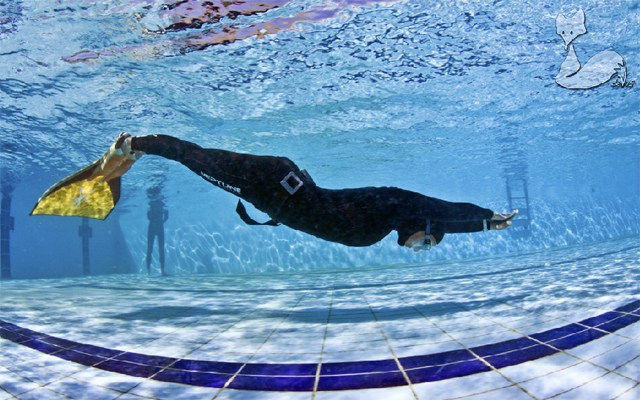On the first part of this article we focused on the depth freediving disciplines, while here we will illustrate the pool disciplines. These are three: Static, Dynamic with Fins and Dynamic without Fins. Sometimes competitions are made in lakes instead of pool, if the conditions allow.
Static (STA)
is the discipline where the freediver tries to hold his breath as long as possible while laying still on the surface moving as little as possible. This can be mentally quite challenging as there is a lot of time to think because you’re doing absolutely nothing. Static is most of the time done with a coach who guides the freediver through his dive by motivating, organizing and rescuing him in case something goes wrong. The current world record in Static is 11.35 minutes by French Stephane Mifsud.
As in some other disciplines there are various variations, like static with breathing pure oxygen prior to the breath-hold. There is also a competition in Dubai were the freediver has to do a breath-hold while being completely submersed under water holding on to a rope without a mask or nose clip nor the help of a coach. A good time in Static can give a lot of confidence for deep diving as your mind knows that your body is capable of holding its breath for a long time.
Dynamic with Fins (DYN)

Freedive International owner Lotta Ericson during a DNF training session. Photo credit Jacques De Vos
The freediver swims with his all body submersed as far as possible; it can be compared to Constant Weight with Fins (CWT) done horizonally. The advantage of DYN over CWT is that in the pool you dont need to equalize (which is a very challenging fact of deep diving), but mentally it can be both easier and more difficult at the same time: the fact that the freediver is just a mere meters below the surface is an advantage and a disadvantage at the same time. In fact it cancels the subconscious “fear of depth/ of the unknown”, helping him to push himself, but because he knows that he can interrupt his performance and breathe whenever he wants, it’s very easy to give up and come up for air.
Freedivers prefer to do DYN in a 50 meter pool since there are fewer turns to be performed than in a 25 meter pool and this saves a lot of energy giving a clear advantage.
Both Dynamic with Fins and no Fins are very good disciplines to practice technique for both pol and depth disciplines. So as part of your training, do 25 meters dives to practice your monofin and no fins technique, without having to focus on equalization or feeling pressure.
The current world record is set by Goran Colak at 281 meters and 237 by Natalia Molchanova for the women. There is also a variation of Dynamic with Fins becoming more popular which is 16×50. Here the freediver must do sixteen 50 meter dives and is allowed to breathe in between each dive as much as he wants, but it’s the shortest overall time who wins. So you must plan the breathing time in between lengths and keep a pace fast enough to beat the others but not so fast that you need too long to recover in between dives.
Dynamic no Fins (DNF)
DNF is Dynamic Apnea done without fins. As in Constant Weight no Fins the diver uses breaststroke technique to cover the length of the pool.

Freedive International owner Lotta Ericson during a DNF training session. Photo credit Jacques De Vos
Most freedivers prefer the pool to be 25m in length because unlike DYN, every turn gives a tremendous advantage; while turning with fins is clumsy ad energy demanding, pushing off the wall without fins is very efficient and adds many “free” meters to the performance. The most crucial factors in this disciplines are: perfect technique; timing between leg stroke – glide- arm stroke; perfect buoyancy, which also makes possible a long glide phase in between strokes, and long breath-hold.
The current world record is set by Mateusz Malina with an incredible distance of 226 meters and 182 meters for the women again by Natalia Molchanova.

By Benjamin Boehme, instructor and blogger at Freedive International








